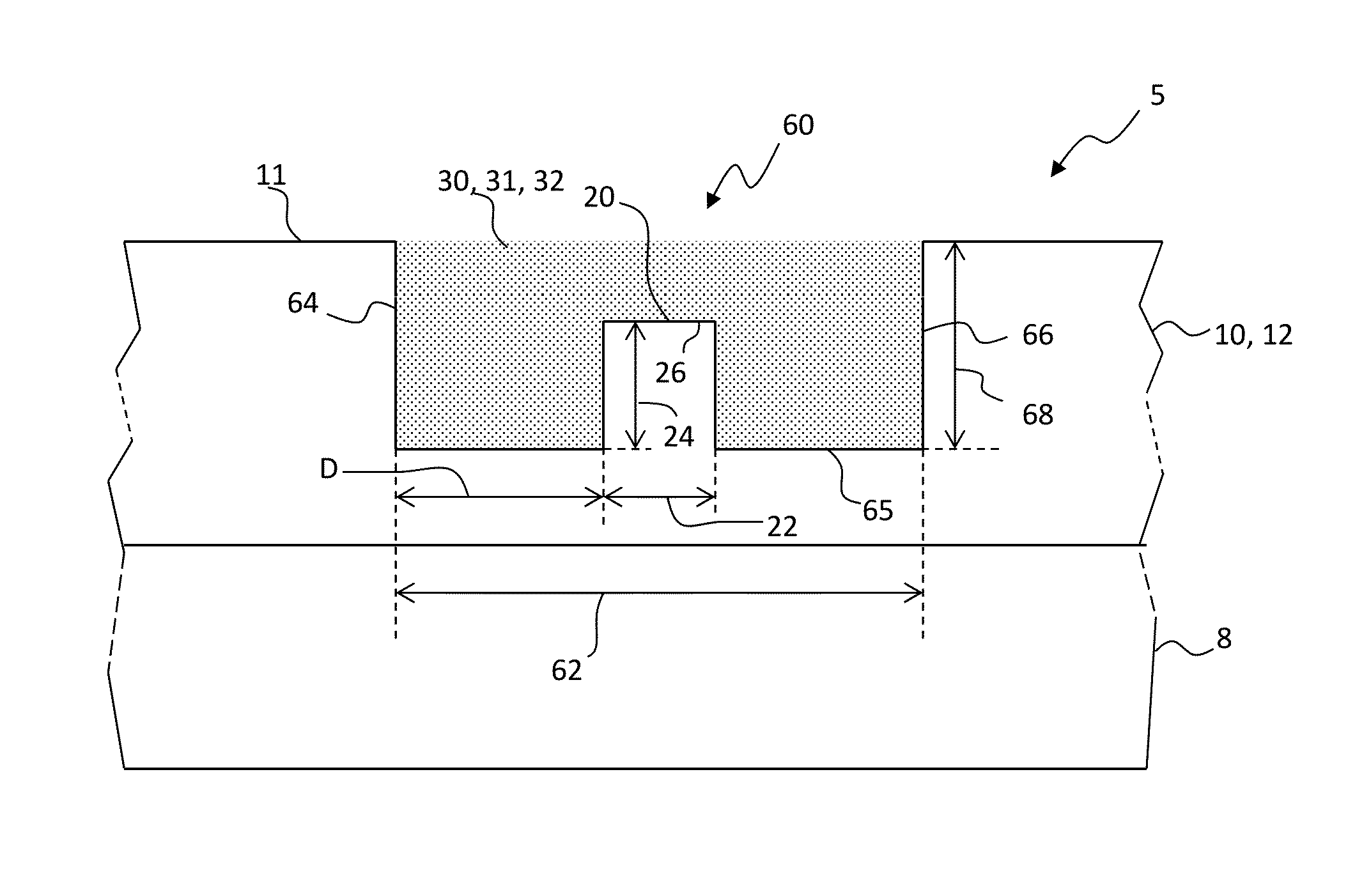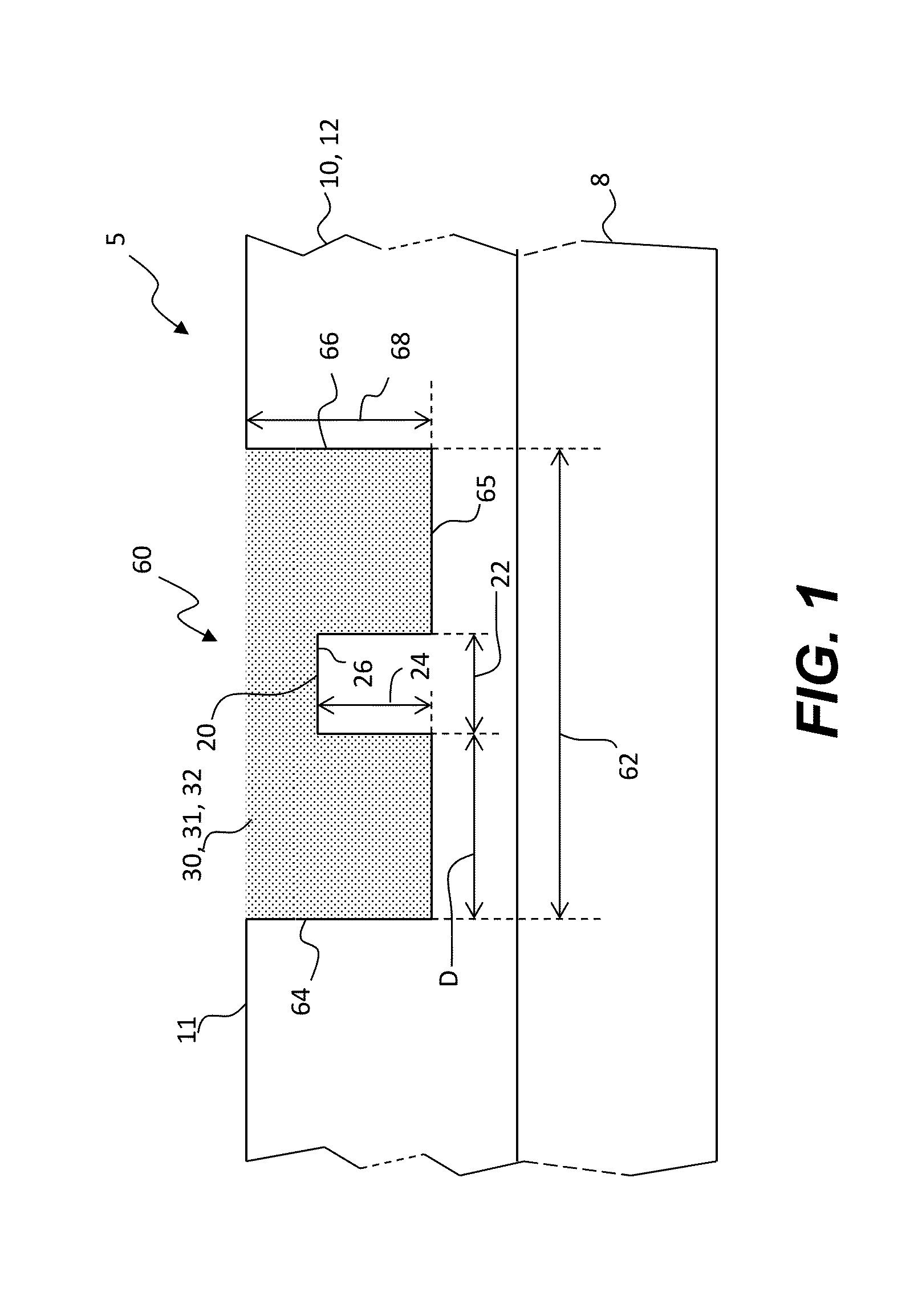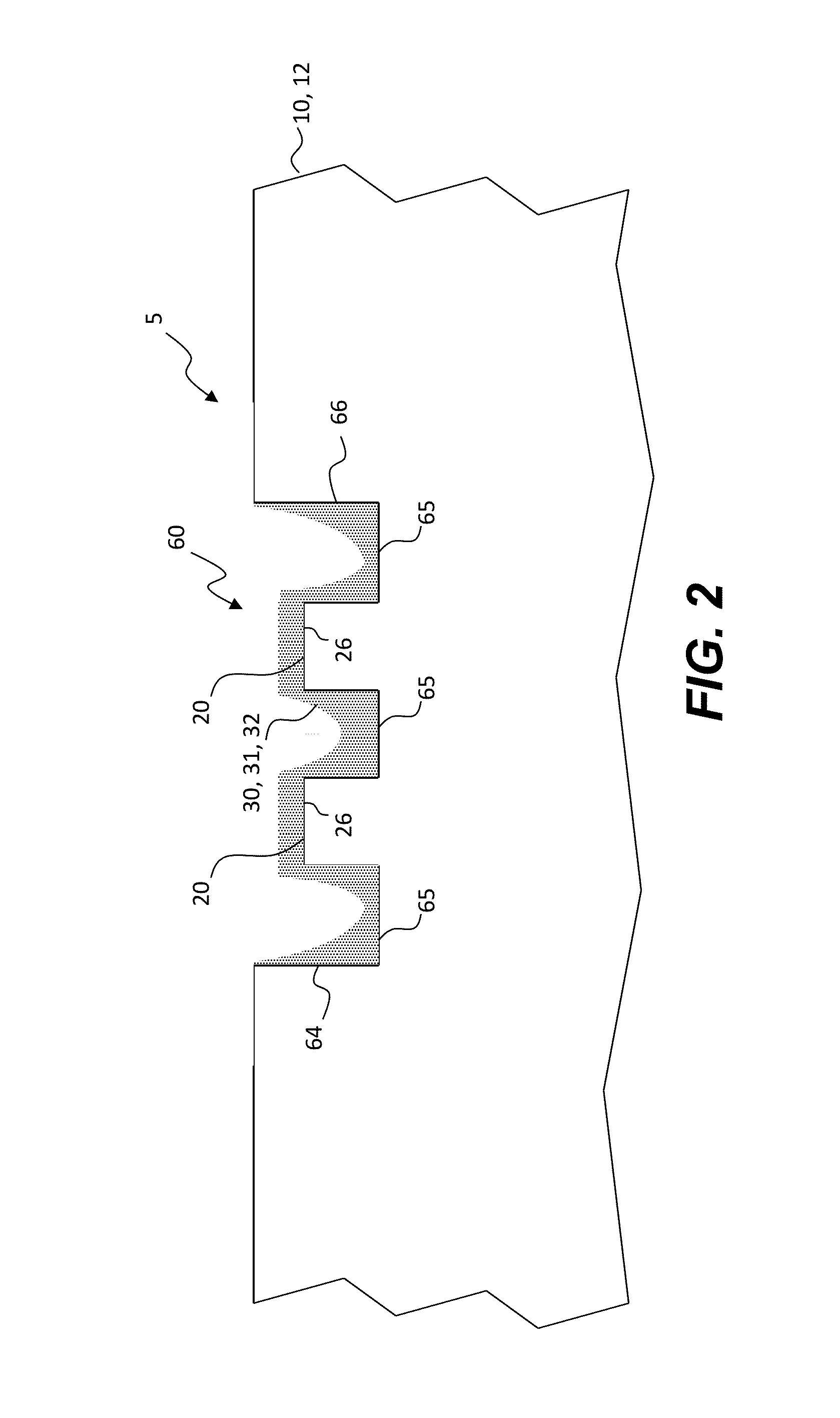Making imprinted micro-wire rib structure
a micro-wire and rib structure technology, applied in the field of imprinted structures, can solve the problems of increasing the cost of deposited and pattern, increasing the cost of transparent conductive metal oxides, and increasing the cost of material requirements, so as to reduce the need for materials, increase manufacturing speed and simplicity, and reduce the effect of space requirements
- Summary
- Abstract
- Description
- Claims
- Application Information
AI Technical Summary
Benefits of technology
Problems solved by technology
Method used
Image
Examples
Embodiment Construction
[0028]Substrates used in combination with displays, for example touch screens, typically have a display area in which transparency is important and a peripheral area used to connect electrodes in the display area to external or local electrical components in the peripheral area using electrical buses. For example, capacitive touch screens use spaced-apart electrically connected micro-wires to form electrodes in the display area. However, such micro-wires are limited in their current-carrying capacity so that they are not suitable as high-conductivity electrical buses for connecting connection pads or electrical components in the peripheral area to the electrodes in the display area. Either multiple such micro-wires are used, requiring additional substrate space in the peripheral area, or alternative conductive materials or processes must be used, requiring additional manufacturing steps and increasing costs. It is desirable to limit the size of the peripheral area to increase the di...
PUM
 Login to View More
Login to View More Abstract
Description
Claims
Application Information
 Login to View More
Login to View More - R&D
- Intellectual Property
- Life Sciences
- Materials
- Tech Scout
- Unparalleled Data Quality
- Higher Quality Content
- 60% Fewer Hallucinations
Browse by: Latest US Patents, China's latest patents, Technical Efficacy Thesaurus, Application Domain, Technology Topic, Popular Technical Reports.
© 2025 PatSnap. All rights reserved.Legal|Privacy policy|Modern Slavery Act Transparency Statement|Sitemap|About US| Contact US: help@patsnap.com



